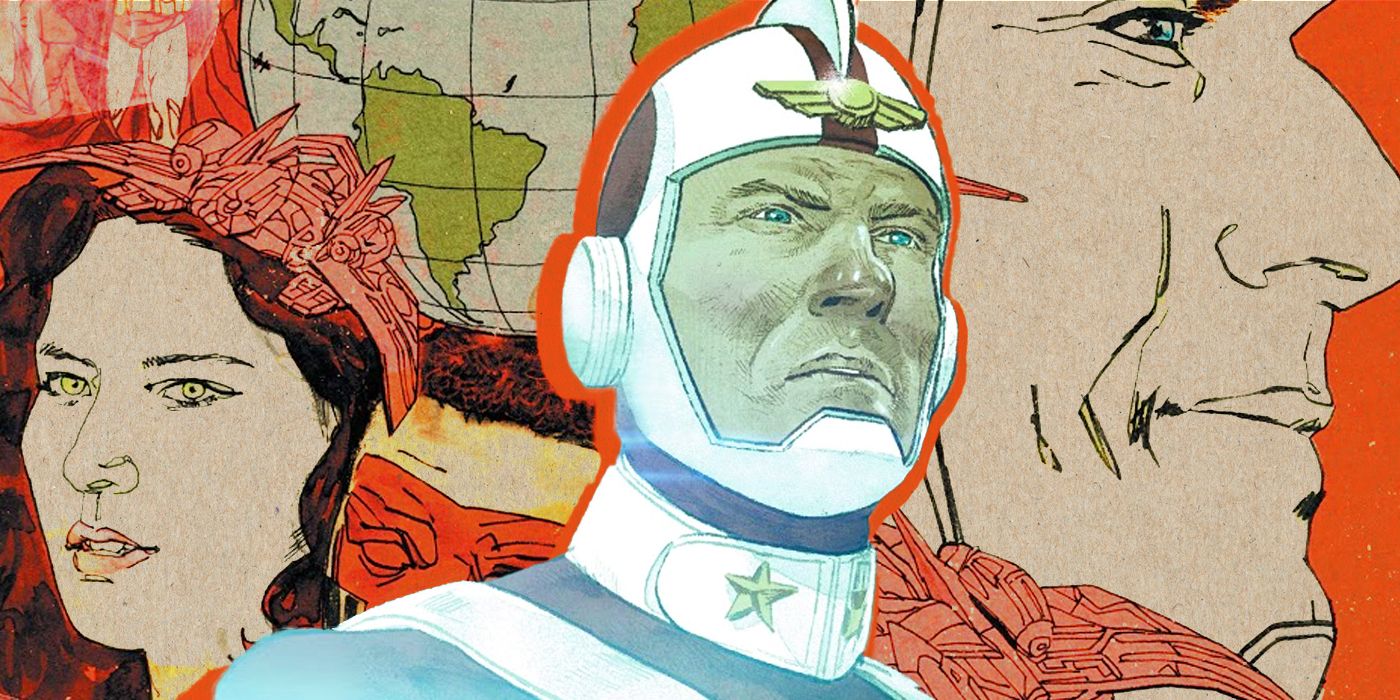As Strange Adventures enters its final act, the cosmic adventure of Adam Strange lines up with themes from Tom King’s other DC Comics work.
Warning: The following contains spoilers from Strange Adventures #9, by Tom King, Mitch Gerads, Evan “Doc” Shaner and Clayton Cowles, on sale now.
As Strange Adventures enters its final act, the horrifying extent to which cosmic superhero Adam Strange went in his war against the Pykkts is graphically revealed, with the interstellar soldier openly committing wartime atrocities. This revelation comes in the wake of other plot twists employed by writer Tom King that directly place the nature of morality and the burden of being a superhero as a common theme across much of his comic book in the DC Universe. Here is a look at how Strange Adventures compares to the rest of King’s work and their exploration into the understated fragility of superheroes as a sort of postmodern deconstruction of DC’s iconic characters.
While not as explicit as some of King’s later work, both his New 52 era titles Grayson and The Omega Men followed young heroes forced to make increasingly morally compromised decisions in order to keep the peace. For Dick Grayson, this entailed the original Boy Wonder going deep undercover with the clandestine organization Spyral to try to dismantle their operations from the inside. For Kyle Rayner in the latter series, the occasional Green Lantern became part of a revolutionary movement branded as terrorists that saw him engaged in progressively more grueling fights across the cosmos against the fearsome Citadel.
While Dick and Kyle’s New 52 adventures were both significantly more justifiable in their motives and less extreme in their methodology, King delved deep into superhero trauma in the 2018 crossover event Heroes in Crisis during the DC Rebirth era. The story expanded on a concept King previously introduced: The superhero rehabilitation facility of Sanctuary, allowing heroes to quietly get the help they needed from the pressures and horrors they endured saving the day on a constant basis. Wally West went to the facility as he faced the grief of apparently losing his family only to accidentally unleash raw energies from the Speed Force that killed his fellow patients around him. After being caught trying to cover up the murders, Wally confessed and has steadily been working towards redemption while still visibly haunted by his actions, even going into the Infinite Frontier era.
Whereas Wally’s actions in Heroes in Crisis were an accident followed by a misguided attempt to avoid culpability, King makes no illusions that Adam Strange’s actions in Strange Adventures are quite deliberate. The cosmic character goes as far as to taunt the innocents that he massacres from devastated cities and has manipulated the official account of the conflict to make himself appear as a tragic war hero rather than a mass-murderer. And while Selina Kyle has always existed within shades of gray, Batman/Catwoman reveals her to be close to the Joker in her past before murdering him in his own home as he lives in retirement decades into the possible future of Gotham City after the death of her husband Bruce Wayne.
The vaunted mythology and public perception of superheroes is fair game in a lot of King’s work; he clearly loves the characters and the genre itself but isn’t afraid to tear it all down and show just how close to the razor’s edge these heroes are before potentially breaking bad. Strange Adventures, an admittedly grim and sharp change to Adam Strange, is shaping up to be a more non-canonical story to the main DCU but, for the story King — along with co-creators Mitch Gerads and Clay Mann — is telling, it is a humanizing, if dark look at what a hero looks like when they are utterly broken down by their respective trauma.
About The Author

